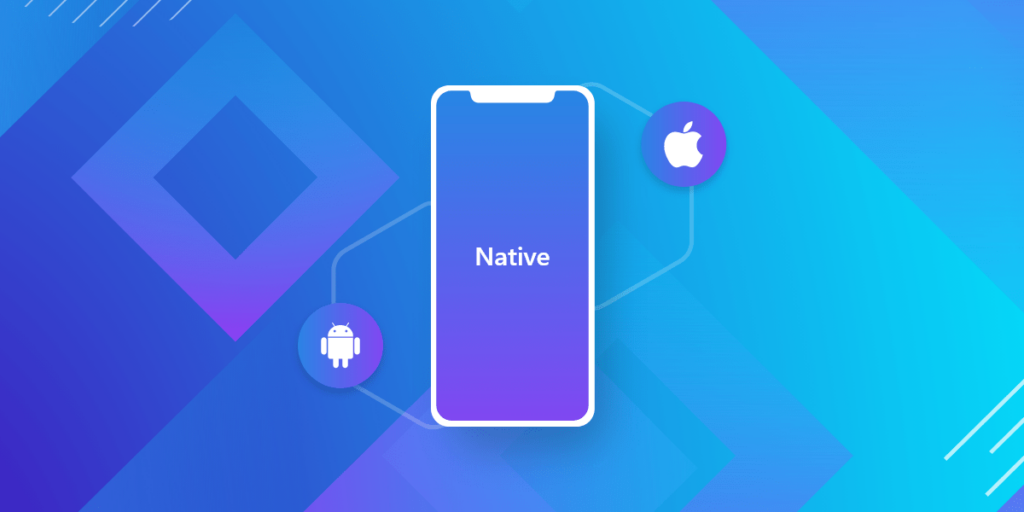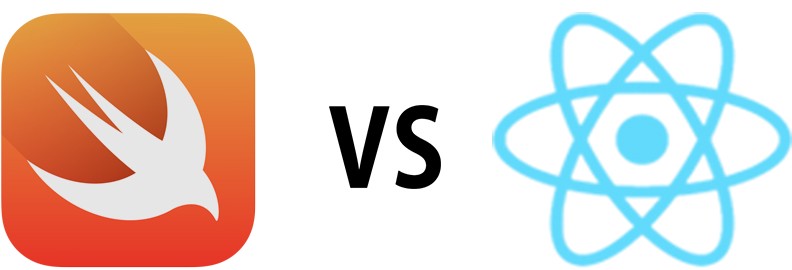Going Native: Why Choosing a Native Mobile App Language Over a Hybrid App Is Future Proofing Your App

In today’s digital world, mobile apps are a critical part of our daily lives. They are used for everything from shopping and banking to entertainment and socializing. As a result, businesses and developers are constantly seeking ways to create mobile apps that stand out from the crowd, offer superior performance, and deliver the best user experience possible. One of the biggest decisions that developers face is whether to choose a native or hybrid mobile app language for their project.
Native mobile app languages are those that are specific to a particular platform, such as iOS or Android. These languages are developed using the software development kit (SDK) provided by the platform owner and can access all of the device’s native features. Some examples of native mobile app languages are Swift (iOS) and Kotlin (Android).
Hybrid or cross-platform mobile app languages, on the other hand, use web technologies such as HTML, CSS, and JavaScript and are then packaged in a native wrapper that allows them to be run on multiple platforms. Some examples of hybrid mobile app languages are React Native, Xamarin, and Ionic.
Choosing a native mobile app language over a hybrid app is future-proofing your app. Native mobile app languages offer several advantages over hybrid languages, including better performance, user experience, security, and platform compatibility. In this article, we will delve deeper into the differences between native and hybrid mobile app languages and why choosing a native mobile app language is the best way to future-proof your app, and can end up costing less in the long run.
Maturity of the Language Ecosystem Architecture
While hybrid mobile app languages may offer the advantage of being able to create an app that runs on multiple platforms with a single codebase, they are not as future-proof as native mobile app languages. One of the key reasons for this is that hybrid app languages are relatively new and have yet to establish themselves as fully mature languages with a dedicated developer community.
Native app languages, on the other hand, have been around for much longer and have a much larger community of developers who are dedicated to improving and evolving the language. This means that when you choose a native mobile app language, you can be confident that there is a wealth of knowledge and support available to help you create the best app possible. Additionally, the fact that native app languages are platform-specific means that they are optimized for the specific platform, resulting in better performance, user experience, and security.
Furthermore, hybrid app languages are often criticized for being relatively short-lived. This is because they rely on third-party frameworks and libraries, which may not be maintained in the future. As a result, it is possible that your hybrid app may not be able to be updated or maintained in the future, leaving it vulnerable to security threats or compatibility issues.
In contrast, native app languages are much more future-proof, as they are continuously updated and maintained by platform owners such as Apple or Google. This means that your app will always be compatible with the latest updates and features of the platform, giving you a significant advantage over hybrid apps in the long run.
In summary, while hybrid app languages may seem like a more convenient option initially, choosing a native mobile app language is the best way to future-proof your app. With a dedicated developer community, better optimization, and ongoing updates and support, native app languages provide a much more reliable and long-lasting foundation for your app.
Cost and Time to Develop

Native apps can sometimes cost less to develop than React Native apps, particularly if the app requires complex features or advanced functionality. This is because React Native relies on a bridge to communicate between the native and JavaScript environments, which can sometimes result in performance issues and may require additional development time to optimize.
In contrast, native app development allows developers to fully leverage the features and capabilities of the operating system and hardware, resulting in smoother and more optimized performance. Additionally, since native development uses platform-specific programming languages like Swift for iOS and Kotlin for Android, it allows developers to take advantage of the platform’s native features and functionality, making it easier and faster to develop custom UI and other features.
While React Native can offer significant cost savings by allowing developers to build apps for both iOS and Android with a single codebase, it may not always be the most cost-effective solution for all app development projects. Ultimately, the cost of app development depends on a variety of factors, including the complexity of the app, the specific features required, and the developer’s level of expertise with the chosen technology.
While hybrid mobile app languages may offer a tempting cost-saving advantage by allowing developers to create a single codebase for multiple platforms, the reality is that native apps end up costing less on a 3-year time horizon. Here are some concrete details to explain why:
- Development time: Developing a hybrid app may take less time initially, but it can become more time-consuming when issues arise due to the need to debug across multiple platforms. Native apps, on the other hand, are optimized for a specific platform, which reduces development time and makes it easier to maintain the codebase in the long run.
- Maintenance costs: Hybrid apps may require more maintenance over time due to their reliance on third-party frameworks and libraries. These frameworks may not be maintained in the future, leading to compatibility issues and increased maintenance costs. In contrast, native apps are continuously updated and maintained by platform owners, which means fewer maintenance costs in the long run.
- User engagement and retention: Native apps tend to have a higher engagement and retention rate than hybrid apps, which can result in higher revenue and ROI. This is because native apps provide a better user experience and are optimized for specific platform features, such as push notifications, which can increase user engagement.
- Performance: Native apps tend to have better performance than hybrid apps, which can lead to higher user satisfaction and fewer complaints about app crashes or slow loading times. This can result in higher ratings and reviews, which can in turn lead to increased downloads and revenue.
- Upgrades and updates: Native apps can take advantage of new platform features and upgrades as they are released, which can keep the app relevant and up-to-date. In contrast, hybrid apps may not be able to take full advantage of new features due to compatibility issues or limitations with third-party libraries.
iOS example – Swift vs. React Native

Swift is a native programming language used for developing iOS mobile apps, while React Native is a hybrid framework that uses JavaScript and requires a bridge to communicate with native iOS components. While both languages have their advantages and disadvantages, here are some iOS mobile app features that may be easier to code using Swift:
- UI/UX Design: Swift offers a native UI/UX design framework called UIKit, which makes it easier to design and create custom user interfaces and animations that are optimized for iOS. In contrast, React Native requires third-party libraries for creating UI/UX designs, which may not be as optimized for iOS and can result in a slower and less native feel.
- Performance: Since Swift is a native language, it is optimized for iOS and can provide better performance than React Native, which uses a bridge to communicate with native iOS components. This can result in faster app load times, smoother animations, and overall better performance.
- Native iOS Features: Swift can take full advantage of native iOS features, such as SiriKit, Core ML, and ARKit, which can provide more functionality and flexibility in app development. In contrast, React Native may not be able to take full advantage of all native iOS features, which can limit app functionality.
- Debugging: Debugging Swift code is generally easier than debugging React Native code, since Swift code can be debugged using Apple’s Xcode IDE, which offers more robust debugging tools and an integrated development environment. Debugging React Native code may require using third-party tools, which can be less intuitive and more time-consuming.
Swift offers a native UI framework called UIKit, which makes it easier to design and create custom user interfaces and animations that are optimized for iOS. This native framework provides a wide range of components and APIs that allow developers to create unique, custom UI designs for their iOS apps.
In contrast, React Native uses a web-based approach to building user interfaces, using components that are designed to work across multiple platforms. While this can make it easier to build apps that work on both iOS and Android, it can also result in less flexibility when it comes to designing custom UI elements that are optimized for iOS.
With Swift, developers can take full advantage of the native iOS platform and its capabilities, including custom animations, gestures, and transitions, which can create a more immersive and responsive user experience. Swift also provides access to advanced layout techniques, such as stack views and auto-layout, which can simplify the process of building complex UI layouts that work across multiple screen sizes and orientations.
Additionally, since Swift is a native programming language, developers have access to a wider range of tools and resources that are specifically tailored to iOS development, such as Apple’s Xcode IDE and the Swift Package Manager. This can make it easier to find and integrate third-party libraries and frameworks that can further extend the functionality and flexibility of the app.
In summary, Swift provides more flexibility than React Native when it comes to building custom user interfaces for iOS apps. With a native UI framework and access to advanced layout techniques and resources, Swift can help developers create unique and optimized UI designs that provide a more immersive and responsive user experience.
Size of Developer Community
According to data on LinkedIn, there are currently approximately 540,000 profiles that list Swift or Kotlin developer experience, compared to about 180,000 profiles that list React Native experience. This indicates that Swift and Kotlin have larger developer communities than React Native.
Swift has been a primary language for iOS app development since its introduction in 2014 and has been used to build some of the most popular iOS apps. As a result, it has a more established and larger developer community, with numerous resources available online, including tutorials, documentation, and support forums. Kotlin, which is used for Android app development, has also gained popularity in recent years and has a large and growing developer community.
Managing Operating System Updates

The ability to easily manage new operating system (OS) updates is of utmost importance, especially since Apple and Android introduce new OS versions very often. Native apps are designed specifically for the OS they run on, so developers can quickly and easily update them when a new OS is released to ensure they remain compatible and optimized.
On the other hand, cross-platform apps need to be compatible with multiple operating systems, so developers must ensure the codebase remains updated for each OS, which can be time-consuming and require coordination to ensure proper functionality.
Moreover, native apps can access the latest APIs and frameworks specific to the OS, resulting in better performance and smoother integration with the OS. This means that native apps can take full advantage of the latest features and capabilities of the OS, while cross-platform apps may have to wait for updates to their development tools or frameworks.
In summary, as Apple and Android frequently introduce new OS versions, it is crucial for apps to be easily managed and updated. Native apps provide a more efficient process for managing new OS updates, allowing developers to quickly and easily ensure that their apps remain compatible and optimized.
Conclusion
In conclusion, choosing a native mobile app language over a hybrid app can future-proof your app by providing a more stable and optimized user experience. While hybrid apps may seem like a cost-effective solution, they often fall short in terms of performance and features. Native mobile app development may require more investment upfront, but the benefits are worth it in the long run. With the increasing demand for high-quality mobile apps and the rapid evolution of technology, it’s crucial to future-proof your app by selecting the most suitable approach for your specific project. By going native, you’ll be able to deliver a seamless and efficient app that will delight your users for years to come.

